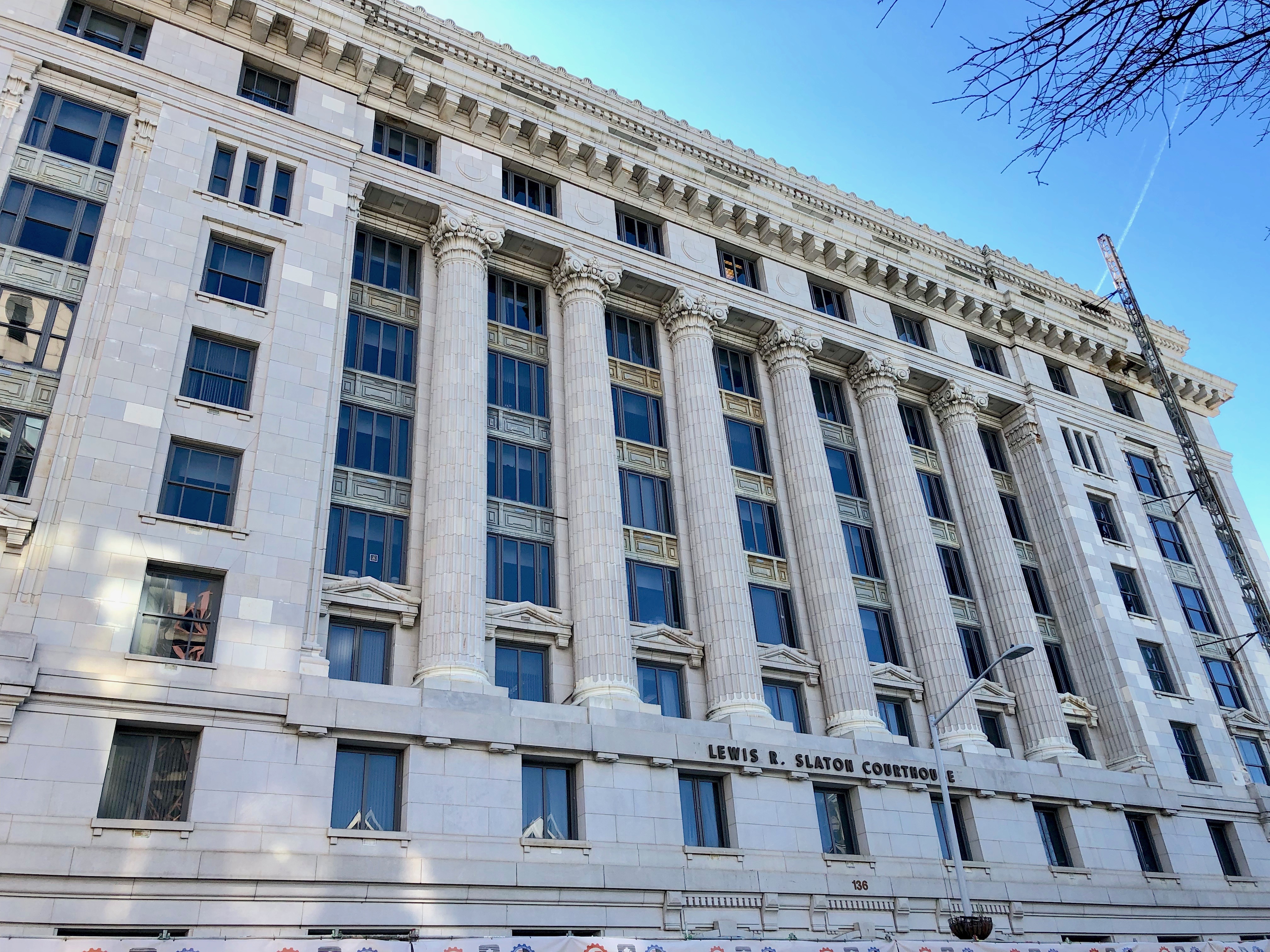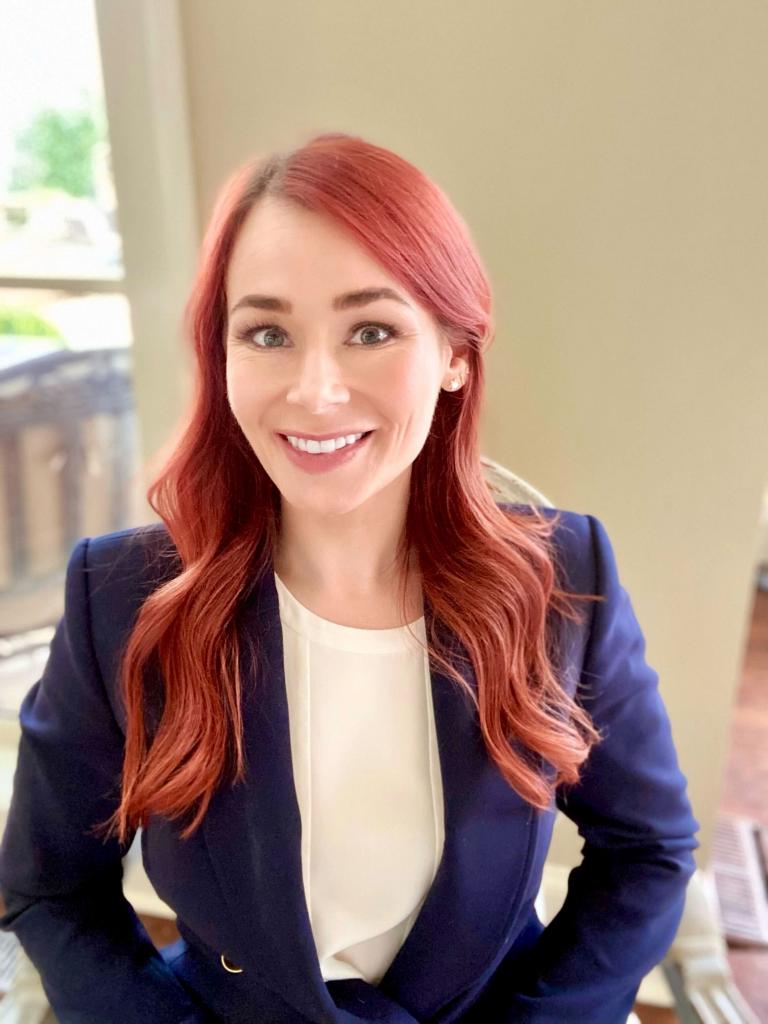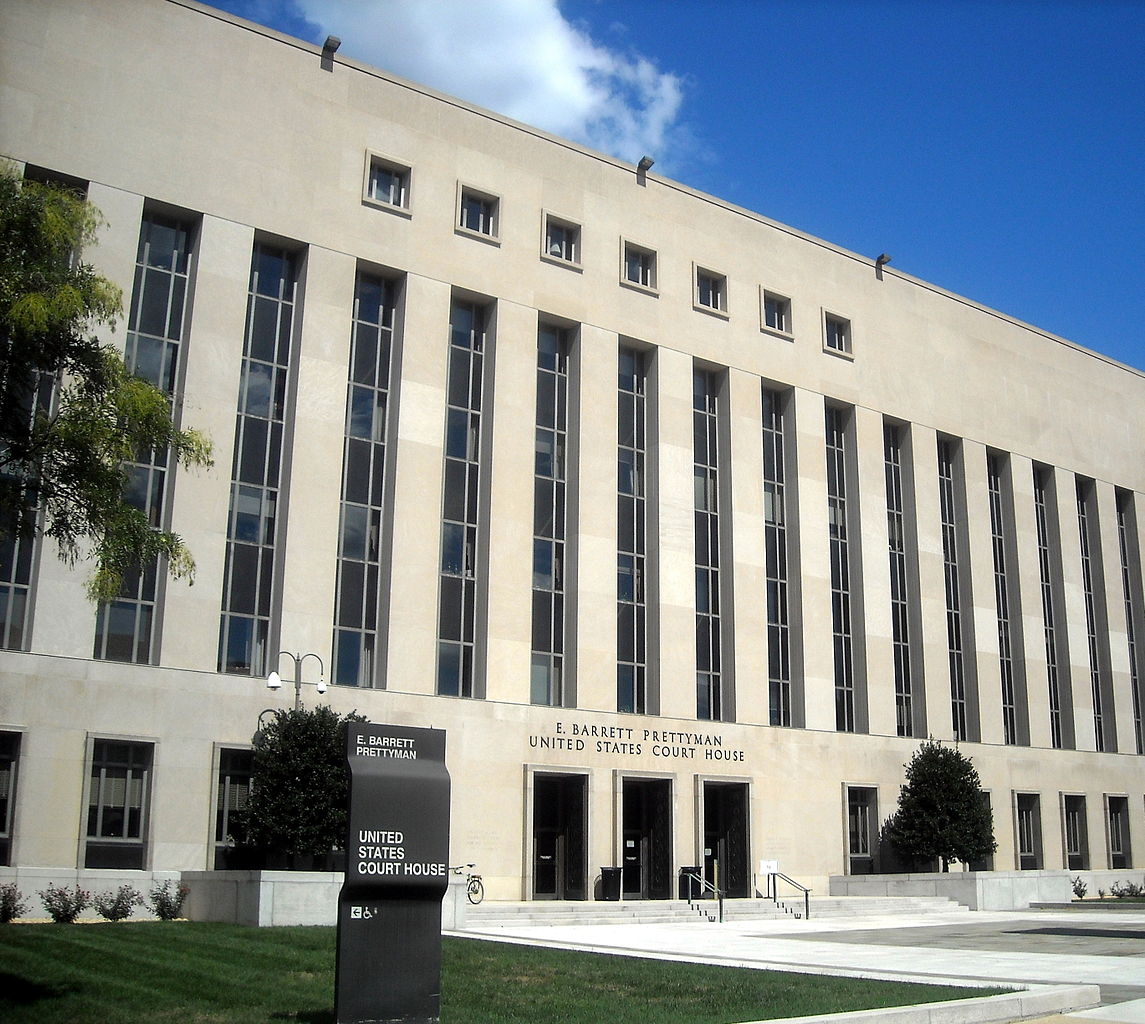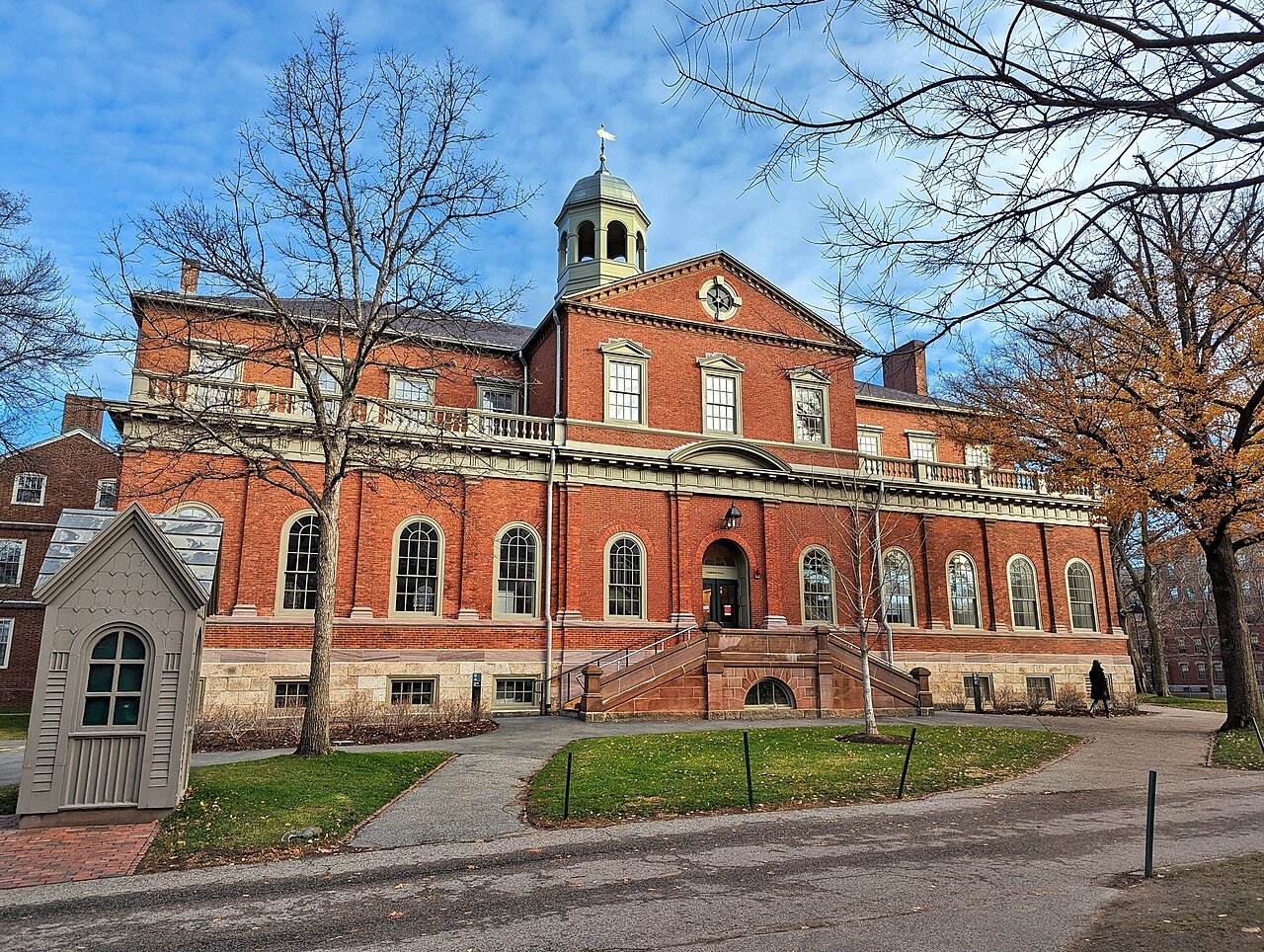Fani Willis to Judge McBurney: Give Us Time, Please
The Fulton County District Attorney wants the special purpose grand jury’s supervising judge to keep its report under seal—at least for now.

Published by The Lawfare Institute
in Cooperation With

Tuesday is a big day for the Fulton County criminal probe into 2020 election interference. After eight months, the “special purpose grand jury” investigating Trump and Co.’s attempts to overturn the results of the 2020 election in Georgia has issued its final report. Now, at noon in the Lewis R. Slaton courthouse in downtown Atlanta, Judge Robert McBurney will hear arguments on whether the final report should be released to the public.
If, that is, the prosecutors ever show up.
It’s bad form as a prosecutor not to show up to your hearings, but it’s 11:58 a.m. and Judge Robert McBurney has just entered the courtroom. Two attorneys, Tom Clyde and Lesli Gaither, sit quietly at a table on the left side of the room. They will argue in favor of publication of the report on behalf of a broad coalition of media organizations, including the New York Times, the Atlanta-Journal Constitution, and the Wall Street Journal. (Lawfare was not asked to join the motion, and we’re feeling aggrieved about the slight.)
The rest of us—mostly reporters—are perched on the wooden pews in the gallery. A videographer stands in the corner, pointing his camera lens at the door.
But the district attorney and her team are nowhere in sight.
To be fair, it’s a busy week for Fulton County prosecutors. Just down the hall, jury selection is underway in a high-profile RICO case against Grammy-award winning rap artist Young Thug and other members of “Young Slime Life,” an alleged “criminal street gang” and record label based in Atlanta. That might explain why Judge McBurney, who has a penchant for punctuality, is willing to wait a few minutes for the prosecutors to arrive. “You all can talk a little bit, it's all right,” McBurney instructs the audience.
We don’t have much time to chat, because the prosecutors soon make their appearance. To my right, a group of four young men breeze into the courtroom. Leading the pack is Nathan Wade, the special prosecutor who was hand-picked by Fulton County District Attorney Fani Willis to assist with the 2020 election probe. He is joined by three other members of the election investigation team: Donald Wakeford, Will Wooten, and Adam Ney.
Still no District Attorney Willis, however; she remains conspicuously absent.
“Mr. Wade, are you ready?” McBurney asks as Wade arrives at his designated table on the right side of the room.
“Judge, if we could have a moment,” Wade says.
“Like, settlement negotiations, or…?” McBurney jokes, employing the characteristically quippy banter that Fulton County court watchers have come to expect from the grand jury’s supervising judge.
“I’m missing one document,” Wade responds, shuffling papers atop the table where he sits on the right side of the room.
“Well, there’s really only one that matters,” McBurney retorts. “I hope you haven’t lost that,” he says, alluding to the grand jury report that brings us all to courtroom 8D on this chilly Tuesday afternoon. There is only one copy of the report, the hearing later reveals, so McBurney’s joke has a particular zing.
Ignoring McBurney’s quips, Wade rises from his seat and hurries toward the exit. Presumably, he’s on the hunt for his missing document—or maybe his boss.
When Wade fails to reappear after a beat, McBurney turns his attention to the next most senior prosecutor remaining in the room: Wooten. “It’s noon and we’re supposed to start,” he observes. Wooten, taking the hint, makes a beeline for the door. He’s on a mission to retrieve Wade from wherever he disappeared to moments ago.
And then there was one: Assistant District Attorney Adam Ney. Ney starts to follow Wooten out the door, but he freezes at the sound of the judge’s voice. “Uh, you need to stay,” McBurney commands. “We need to keep at least one ADA here.”
Again, courtroom advocacy tip: Don’t ghost the judge. Bad idea.
And probably best to leave someone in the court who can actually argue your case if need be. While Ney is a core member of the Fulton County election interference investigation team, he tends to operate in the background. In the months since I began covering this case, I haven’t once seen him argue a motion. I suspect that explains the panicked expression on his face when McBurney instructs him to “get going” without his colleagues.
This is the nightmare: You have to argue a case you haven’t prepared at all to argue. At least Ney is wearing pants.
But just as he is about to “get going,” Wade and the rest of the team suddenly reappear; they are also wearing pants.
After introducing himself, Wade informs the judge that Willis “will be making an appearance as well,” but the “bulk” of the argument will be delivered by Wakeford. Like Wade, Wakeford is a veteran prosecutor on the Fulton County election probe team. He’s argued—and won—several key battles in the case, including the Lindsey Graham subpoena litigation in federal court and the Brian Kemp subpoena litigation before Judge McBurney.
With introductions now behind us, Judge McBurney kicks things off with some background. “I hand delivered to the district attorney the copy of the final report soon after it was available,” he says. “That’s the one copy I’m aware of that’s in circulation.” Today, he announces, we’re here to discuss whether the final report should be shared more broadly, either in whole or in part.
Next, McBurney turns to the legal issues raised by publication of the report. He notes, first, that the special purpose grand jury voted to make their report public pursuant to O.C.G.A. § 15-12-80, which authorizes a grand jury to recommend publication of their “general presentments” and requires the judge to order publication as recommended. In other words: If that provision applies, the law requires McBurney to release the grand jury’s report—or at least some version of it—to the public. But the “unresolved question,” as McBurney wrote in a Jan. 9 order, is whether the grand jury’s report constitutes a “general presentment.” Accordingly, McBurney instructs the parties to talk about whether the report is the “equivalent” of a general presentment.
Additionally, McBurney continues, “we need to talk about how this report might be viewed as what the courts refer to as ‘court records.’” If the report is a “court record,” he explains, it enjoys a presumption of public access under Rule 21 of Georgia’s Superior Court Rules.
As McBurney speaks, Willis finally appears through a door to my right. She is clad in a charcoal suit and a tan blouse; she makes her way toward the seat next to Wade.
McBurney, now finished with his preamble, invites the district attorney’s office to provide its perspective. Willis rises from her seat and strides toward the lectern. This marks her first appearance at a public hearing in the case since May, when she oversaw the selection and empanelment process for the grand jury.
Announcing that she will provide an “overview” of the situation before handing things off to Wakeford, Willis begins by noting that the special purpose grand jury was intended to function as an “investigative tool.” And at this point of an investigation, she says, prosecutors find themselves in a position in which they need to ensure defendants’ rights are protected, too. “Sometimes it’s a very selfish interest,” she continues. “You don't want the case overturned.”
“In this case, the state understands the media’s inquiry and the world’s interest, but we have to be mindful of protecting future defendants’ rights,” Willis stresses. If the report is released, she continues, putative defendants could argue that it impacted their right to receive a fair trial in Fulton County. “For future defendants to be treated fairly, it’s not appropriate at this time to have this report released,” she urges. “Decisions are imminent,” she concludes.
Having made her position clear, Willis retreats to her seat next to Wade. Now her colleague, Wakeford, is up. He springs to the lectern, where he announces that he has a question for McBurney. The court’s Jan. 9 order noted that the grand jury asked for publication under O.C.G.A. § 15-12-80. But “mention of 15-12-80 is not in the report,” Wakeford claims. What, then, was the source of McBurney’s reference to O.C.G.A. § 15-12-80?
“You’re correct, it’s not in the report,” McBurney responds, adding that the grand jurors themselves requested publication under O.C.G.A. § 15-12-80. “It’s something that they did after they completed their work.”
Next, McBurney attempts to “focus the dialogue” by asking Wakeford about some “threshold questions.” To start, he wants to know more about the basis for non-disclosure of the report. He notes that the principle of grand jury secrecy is “fairly limited” in Georgia, especially when compared to grand jury secrecy in federal practice. Georgia grand jurors are prohibited from talking about their deliberations, but not the outcome of those deliberations. “Unless we stretch to say the final report is their deliberations, I think we’re already outside the statutory realm of what’s secret,” McBurney says.
Wakeford responds by attempting to draw a distinction between special purpose grand juries and regular grand juries under Georgia law. But before he can get to the substance of that argument, McBurney cuts him off. He notes that the special grand jury statute and the regular grand jury statute aren’t totally independent. Another part of the statute, O.C.G.A. 15-12-102, provides that the rules applicable to regular grand juries apply to special purpose grand juries, too. As such, McBurney continues, the statutory framework that applies to regular grand juries must serve as a “guide” for special purpose grand juries. And that includes the relatively lax rules around secrecy.
Wakeford replies that the actual content of the report should provide some guidance on the secrecy of the report. Noting that the special purpose grand jury was requested specifically by the district attorney for the “sole purpose” of investigating possible criminal activity, he rattles off a list of elements the report could theoretically contain: a summary of the grand jury’s factual findings, a list of statutes that grand jury believes were violated, or a list of individuals with accompanying “activities” that the grand jury believes could have broken the law.
Moreover, Wakeford continues, records that are part of an ongoing criminal investigation are not subject to public scrutiny. At this time, he says, the report remains part of an “ongoing criminal investigation.” And “if that report contains charging recommendations, that is certainly solely for the use of the district attorney,” he contends.
Now Wakeford turns to whether the grand jury’s report must be published under O.C.G.A. § 15-12-80. He contends that the statutory provision does not apply because the report does not amount to a “general presentment.” He acknowledges that Georgia law recognizes two types of presentments: a “general presentment” is an informational report, while a “special presentment” is a document that formally charges a person with a crime. According to Wakeford, a special purpose grand jury report can include aspects of both. “The content of a special purpose grand jury report can contain elements of a general and a special presentment, making it a third kind of thing: a special purpose grand jury report,” he asserts.
McBurney wonders aloud if a report that contains elements of both could be partially published under O.C.G.A. § 15-12-80. That is, if the report includes elements of a “general presentment,” why not publish those parts and redact the parts that amount to a “special presentment” or something else?
Holding his ground, Wakeford says that parts of the report could not be published in that scenario. “At that point, if it’s not something that can be considered solely a general presentment, then it’s not a general presentment under the law,” he claims. “Where the choice of words is “report” and the “report” can take on this strange hybrid form, you cannot presume that O.C.G.A. § 15-12-80 applies.” Instead, he urges, the content of the report should guide the court’s analysis.
Now Wakeford pivots back to the “discretionary” aspects of McBurney’s decision. Observing that the report was only issued ten days ago, he asserts that the district attorney’s office has had “no opportunity” to incorporate anything in the report into its ongoing criminal investigation. “We think immediately releasing before the DA has even had an opportunity to address publicly whether there will be charges or not…is dangerous,” he says. “It’s dangerous to people who may or may not be named in the report, for various reasons. It’s also a disservice to the witnesses who came to the grand jury and spoke the truth to the grand jury.”
In response, McBurney raises a comparison to the Jan. 6 Committee report. That report, he says, was released to the public even amid an ongoing criminal investigation. And there is no indication that it has hindered the Department of Justice’s ongoing investigation related to Jan. 6. “A parallel process happened in Washington, DC and the world kept spinning,” McBurney contends. “That hasn’t caused the wheels to fall off the bus.”
Wakeford rightly replies that we actually do not know the impact of the Jan. 6 Committee’s report on the Justice Department’s investigation, because the department operates in secrecy. And he notes as well that the congressional hearings were mostly public, which is different from how the grand jury has operated in this investigation. Ultimately, he claims, the time for a conversation about publication should come after the district attorney has had a public opportunity to say that she is or is not pursuing charges. At that point, he says, the court will have a much better “roadmap” to pursue publication.
Moving on, Wakeford expounds on whether the grand jury’s report is a “court record” that is afforded the presumption of public access. He contends, first, that records related to ongoing criminal investigations are excluded from the presumption of public access under Rule 21. And, further, he argues that the grand jury’s report is not a “court record” under Rule 21 because it was not presented in open court; instead, the final report was delivered directly to Judge McBurney.
As Wakeford’s time at the lectern wanes, McBurney doesn’t appear to be swayed. “I appreciate that I could do things to help maintain the investigation and not get it prematurely derailed,” he says at one point. “But . . . I’m not interested in entering an order that we know is DOA—dead on appeal.”
Undeterred, Wakeford ends by urging McBurney to consider the “content of the report” when making his decision, and requests time to submit written briefing if necessary. “The main point is that today is not the time, now is not the time, but eventually we will have a better idea of when the time will be,” he concludes.
Now Tom Clyde, an attorney for the Atlanta-Journal Constitution, makes his way to the lectern to argue on behalf of the Journal-Constitution and the group of media organizations from which Lawfare was cruelly excluded. “We believe that the report should be released now and in its entirety,” he begins. “And that approach is consistent with the way the American judicial system operates.”
While acknowledging that grand jury operations are subject to a veil of secrecy during its investigation, Clyde says that the grand jury has now completed that investigation and produced a report. The jurors themselves have asked for it to be published. And there’s “enormous” public interest in the findings of that report, he stresses.
It’s not unusual for a district attorney to be uncomfortable with the release of information about an ongoing investigation, Clyde explains. “That occurs all the time.” But courts only allow judicial records to be sealed in the most “extraordinary situations.”
McBurney interjects to ask why this isn’t an “extraordinary circumstance” that would justify keeping the document sealed. He notes that the grand jury’s investigation was requested by the executive branch—the district attorney. What’s more, he observes, there were no public hearings like there would be during a trial. “There’s not even a court filing that we’re talking about,” he exclaims. McBurney’s point is that the grand jury's process is different from a “normal” judicial process in which records are presumptively subject to public scrutiny.
Doubling down, Clyde responds by saying that the output of the special purpose grand jury is a “court record” under Rule 21 and subject to the presumption of public access. The process of the special purpose grand jury can’t be properly characterized as a “conduit” of the executive branch. It required the jurors to come to court each week to devote their time and energy to the investigation, during which time they were supervised by a judge. “It’s actually an extraordinary exercise of judicial power,” Clyde stresses. And that is the kind of environment, he continues, in which the case law has required the presumption of public access.
Pivoting to arguments raised by the district attorney regarding the risk of prejudice to potential defendants, Clyde notes that other documents in a criminal case are subject to public scrutiny. And some of those documents, he explains, are significantly more prejudicial than the grand jury’s report. As an example, he continues, documents that are the subject of evidence suppression hearings are routinely disclosed in public filings. “So, I don’t think there’s a compelling case for protecting other people’s rights,” he says. Even if there were, Rule 21 requires that prejudice to potential defendants must significantly outweigh the presumption of public access. That’s simply not the case here, he claims. There is genuinely “overwhelming” public interest in this report, which involves the conduct of public officials in a national election.
Turning to whether O.C.G.A. § 15-12-80 applies, Clyde points to two examples of prior special purpose grand jury reports that were published in local legal gazettes pursuant to that provision of the statute. He notes that the reports also criticized the conduct of public officials–yet those criticisms were not withheld or redacted. What’s more, he adds that publication could not possibly invade the grand jury’s deliberations by releasing the fruits of those deliberations, since it was the grand jury itself that asked that the report be published.
Clyde finishes by asking Judge McBurney to order publication of the report under O.C.G.A. § 15-12-80. He says he will submit a written response to the district attorney’s position, which it is articulating for the first time at this hearing.
Then McBurney turns back to Wakeford for the DA’s office: “I see the post-it notes flying,” he observes. He invites Wakeford to provide a brief rebuttal.
Wakeford trudges back to the lectern. He argues that the media intervenors have strayed too far from the language in the case law that determines what constitutes a “court record” for purposes of the Rule 21 presumption. Wakeford touches on language about records that fall within the “traditional” records accessible to the public, and attempts to argue that the grand jury’s report is categorically not “traditional.” The document is better understood not as a court record but as a piece of an ongoing criminal investigation, he contends. Moreover, Wakeford reiterates his belief that McBurney has discretion to determine timing of the report’s release because the grand jurors did not stipulate when the report should be published.
Finally, Wakeford stresses again that the district attorney is grateful to the grand jurors for the time and sacrifice they provided. He says she wants to honor their wishes, but is also the steward of an ongoing criminal investigation. The time will come for publication, he says, but “it’s just not the time.” With that, he strides back to his seat at the table with Willis.
Now McBurney is ready to wrap things up. He proposes thinking about it all a bit, and suggests that he will contact intervenors or the DA’s office if he has questions that require a response. “As I said early on, there will be no rash decisions,” he says, assuring everyone that the report is not going to drop in the public’s lap with no warning. “I will circle back and we’ll figure out the best way to move forward with this.”
Willis says she has nothing further, and she thanks McBurney. Before we end, however, Clyde returns to the lectern to talk about the possibility of appeal—if things get that far. If there is a ruling of non-disclosure, he asks McBurney to reach the issue of Rule 21 in particular. In reply, McBurney says that any order he issues will include each of the bases raised at today’s hearing.
With that, McBurney summarily concludes the hearing: “That’s it, everyone.”
Willis practically bolts from her chair and out the door to my right.





